Shogi from the Land of the Rising Sun
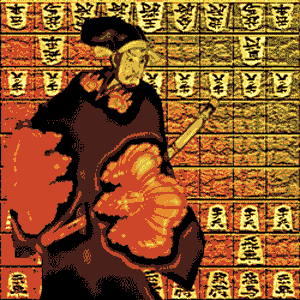
Shogi is chess from Japan
It directly translates as General's Board Game. Shogun is the Japanese word for General and gi means game. It is widely believed that Shogi became popular because of the drop rule.
Around that time when enemy soldiers were captured in battle, they would agree to fight for their captors as a means of survival. The drop rule in Shogi allows a player to return his opponent's captured pieces to the board as his own. You can add your own Shogi stories to the website if you wish.
History
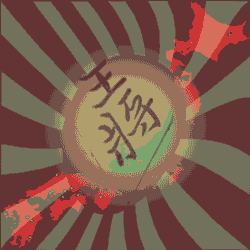
Shogi has been played in Japan for 1,000 years
One branch spread west through Persia, the Gulf region, North Africa and finally into Europe. It produced similar games such as Shatranj and Western Chess. The other went north into China, then Korea and on into Japan. All of the South-East Asian variants are from this side of the family.
It's believed that chess in one form or another arrived in Japan as early as a thousand years ago. Pieces and literature dating from the 11th Century have been found. Modern Shogi evolved from these variants.
Rules
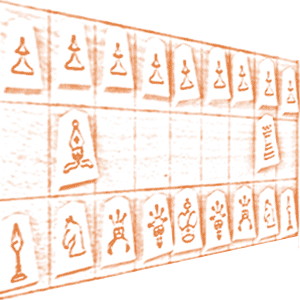
Western pieces or traditional Japanese pieces can be used
The board is not checkered like a Western chessboard. All squares are the same color. Even the two armies have no difference in color or marking. Pieces are identified as one side or the other by the way they are facing. Even so the two sides are called Black and White with Black moving first.
A captured piece can be used by the other side when later returned to the board facing in the other direction. Every piece except the King and Gold Generals can promote if they wish by reaching the final 3 ranks of the board.
Strategy
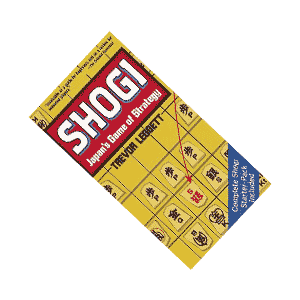
Castle Early
Most pawns get captured early on and get dropped in later on the other side behind enemy lines where they can be promoted to a gold general. This is done by flipping the piece over on the other side to reveal a different marking.
The endgame begins when one player breaks through his opponents lines. He will now try to checkmate the King. At this point the King may try to flee to the center of the board where he will be harder to mate. Very often both players will be breaking through at more or less the same time and then it's a race to checkmate.
Play

Play
Want to start against a computer and work out how the game works and maybe some strategies? Look no further than Japanese Chess. Here you will find a good training ground to prepare for human opponents. Before long you will be ready to go to the next level.
When you get the hang of this game and you're ready to tussle with your peers then 81Dojo is as good a place as any. You can grow as a Shogi player here by playing regularly.
Tell us Your Amazing Tale from Shogi History
Shogi is played in many parks and streets all over Tokyo. It has been part of Japanese life for 1,000 years and is now part of the national identity, the national psyche. There must be a wealth of great stories and tales from Shogi history dating back through the centuries. Do you have an amazing tale from Shogi's rich history?
Amazing Shogi Tales Left by other Contributors
Click below to see Shogi Tales by other Contributors...
Shogi - Japanese chess Not rated yet
Are you a chess lover who plays a lot of chess? Are you getting bored with playing it for a long time and need a change? Hopefully I can help you find …
Shogi - Indian Origin Not rated yet
Shogi a two-player board game known as Japanese Chess is identical to the Asian game Chaturanga which originated in India. Chaturanga has a historical …
Shogi Monk Not rated yet
There are many fairy tales exist related to Shogi, the Japanese Chess, as the origins of Shogi still remain obscure. There is one interesting story about …
Ancient Shogi Forms Not rated yet
The word Shogi means general's board game. This game is also known as Japanese Chess. It is a board game must have two players. The earliest form of the …
Shogi a brief History Not rated yet
Shogi is a type of Chess played in Japan which consists of the cells of a 9x9 board where the first 3 rows form the player's camp and the last 3 rows the …
Moving On
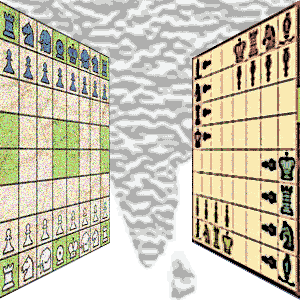
Play Chaturanga
Having played a few games that was the one thing that kept throwing me. At first I kept wondering how these enemy pieces kept showing up in my end zone. Then I remembered the drop rule.
Next we will move on to the mother of all chess variants. The one from which it is said they all sprang. Dating back to India in the 6th Century AD, this is Chaturanga.
- Home ›
- Chess Variants ›
- Shogi






